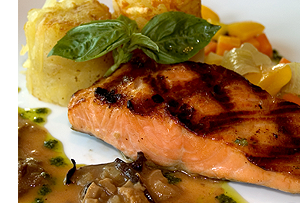 Fitness is a term that is used to help define the ability to stay in the best physical shape.
Fitness is a term that is used to help define the ability to stay in the best physical shape.
You may ask, then, “What am I staying in shape for?” To each person, this will be something different.
For most, it is a matter of staying healthy as long as possible. You see, your body is designed to work as a machine. When each part of the machine is cared for, the entire machine works the best that it can. When the machine is neglected either in part or in the whole, then the machine won’t run well and eventually won’t run at all.
If a car, for example, is well maintained for many years, it will last many years longer. If it isn’t taken care of, for example you don’t change the oil in it, you cut several years off the life of the car. That’s costly to you, but when you look at this as your body, you are shaving away days, weeks, and even years off of your life when you don’t take care of your machine (your body.)
Fitness is a necessary part of life. Before we get on the soap box, remember that fitness is something that you can get into the habit of doing which makes it easy.
Fitness is not something that you have to struggle with. When you were three you were probably taught to brush your teeth. You learned to put your clothes on. When you were learning how to do them, you likely hated it. But, once you learned how to do it, it became something that you didn’t think twice about. Do you worry about brushing your teeth today? No, because it’s a habit. That’s what we want you to think of when you think of fitness.
It’s just something that you do. Granted, the first weeks of learning to be fit and staying healthy will be the hardest. You’ll dread it. You’ll find excuses about not doing it. You’ll claim that getting fit is just too hard. You just can’t give up what you love. That’s not true.
In fact, if you have the will power to save your life by sacrificing for just a few weeks, you’ll see that fitness can be easily mastered by you.
Our first goal is to determine where you stand right now. Don’t worry, this is painless, but it may hurt your ego a bit to do it. Nevertheless, it’s an important first step.
Where Are You Now?
Take a look at yourself right now. What do you see? If you are unhappy about any part of your body, chances are good that area of your body is bothering you because it’s an unhealthy area.
Here are some questions to ask yourself to determine where you stand right now
• Do you have aches and pains in parts of your body that are not from an injury?
• Do you have clothing that doesn’t fit parts of your body well?
• Do you struggle to do physical activities? Do you avoid them because you know you can’t do them?
• Are you unhappy with the way that your body looks? Do you avoid looking in the mirror?
• Have you been told by your doctor, your family or others that you need to consider your fitness?
If so, then you need to begin by understanding that change needs to happen. There are several tools that you need to use to determine your health level currently. You can find calculators for many of these available to you free of charge on the web. You need to use them to understand exactly where you stand right now.
• Your Blood Pressure: The pressure in which your heart pumps blood throughout your body. You need this number to be there, but it needs to be in a certain range to be healthy. For adults, this is generally 120 to 139/80 to 89. Ask your doctor where your blood pressure is.
• Body Mass Index: Your BMI is a measure of the percentage of fat on your body. The higher this number is, the more prone to health risks you are.
• Ideal Weight: In comparison to your height and body structure, your ideal weight is the weight that you should be, ideally.
These three things are critical elements for you to take into consideration when considering where you stand right now. But, there’s much more for you to consider. One thing that we want you to do besides getting the above information is to grab a tape measure and get one of the most important measurements out there: your waist.
Your waist is important because it is the indication on your body of your potential health risk. Those that have a larger midsection are most prone to health risks.
This is an important piece of information because of how vital it is to your health. Those that have a large midsection are the most prone to heart problems. The fat that is here will push into your body, causing difficulty for each organ there. Your kidneys, your lungs and even your heart are suppressed. In effect, the fat here is likely to be what kills you, if you are overweight.
What To Start With
To get started with fitness, start by getting through these basic first steps.
1. Meet with your doctor to talk about your overall health. Ask him for measurements of your blood pressure, your heart rate as well as any other important factors he may be interested in you improving. Determine that you are healthy enough physically to begin improving through diet and exercise.
2. Get your weight. Do this at home on a well programmed scale, not at your doctor’s office. Do it first thing in the morning after you’ve gone to the bathroom but before you have eaten. Do it the same time and same way every time you weigh yourself.
3. Calculate your BMI. You need this to see just how unhealthy you are currently. It’s going to come down and that will be quite rewarding!
4. Measure your waist. Stand up straight. Pull up your shirt, suck in your gut and measure at your belly button all the way around using a tape measure. This will be your indication of your weight loss and health improvement.
5. Set your goals. Determine what’s important for you to maintain, to improve on, and to work on first. Write them down and post them in several locations in your home.
Now that you have this done, you can begin to improve your health. I’ll help you throughout the process!
Its Not Only For Weight Loss
Although many people start looking into fitness because they want to lose weight, fitness is not just about weight loss. By understanding where you stand on these factors above, you can work to improve your overall wellness and increase your lifespan as well as the quality of life that you are currently living.
If you don’t think that you need to lose weight, that’s great! You are one step closer to being healthy. But, that’s not to say that you don’t have health problems beyond that level. Many people are still at risk for high blood pressure, high cholesterol as well as other concerns even though they aren’t technically overweight. Therefore, you need to take into consideration the fact that overall health is in fact important to improve.
Throughout this book, we’ll point you in the direction of improving your overall health. For many that will mean losing weight. For others, that will mean improving other qualities of your life. There’s much to learn and improve on for most of us.
What You Will Learn
So, what will you learn in the next coming weeks?
• Improving your body fitness
• Improving your diet fitness
• Improving your mind fitness
• Improving your lifestyle fitness
Each of these aspects is quite important. While your body must be maintained as much as possible for health, it doesn’t do much good if you don’t eat the right foods. Losing weight, for example, isn’t enough if you aren’t eating the right foods even if you are losing weight.
With your mind fitness, we mean making sure you are emotionally and mentally fit. That means insuring that your overall life is healthy in regards to the life that you lead. Emotional stability is critical to overall health.
With lifestyle fitness, the goal is to improve your stress level. It has been shown that those that are under a lot of stress are often the most at risk for health problems due to the stress.
Throughout each of these aspects, we’ll teach you how to improve your life through easy, and even fun, ways. Because each plays a role in your overall health, we’ll tackle what the healthy standard is, help you to understand where you are and then help you to get to the goals that you have.
Since your body is likely to be your largest factor impacting your life, we will start there. Remember, each aspect is just as important as the next, though.




